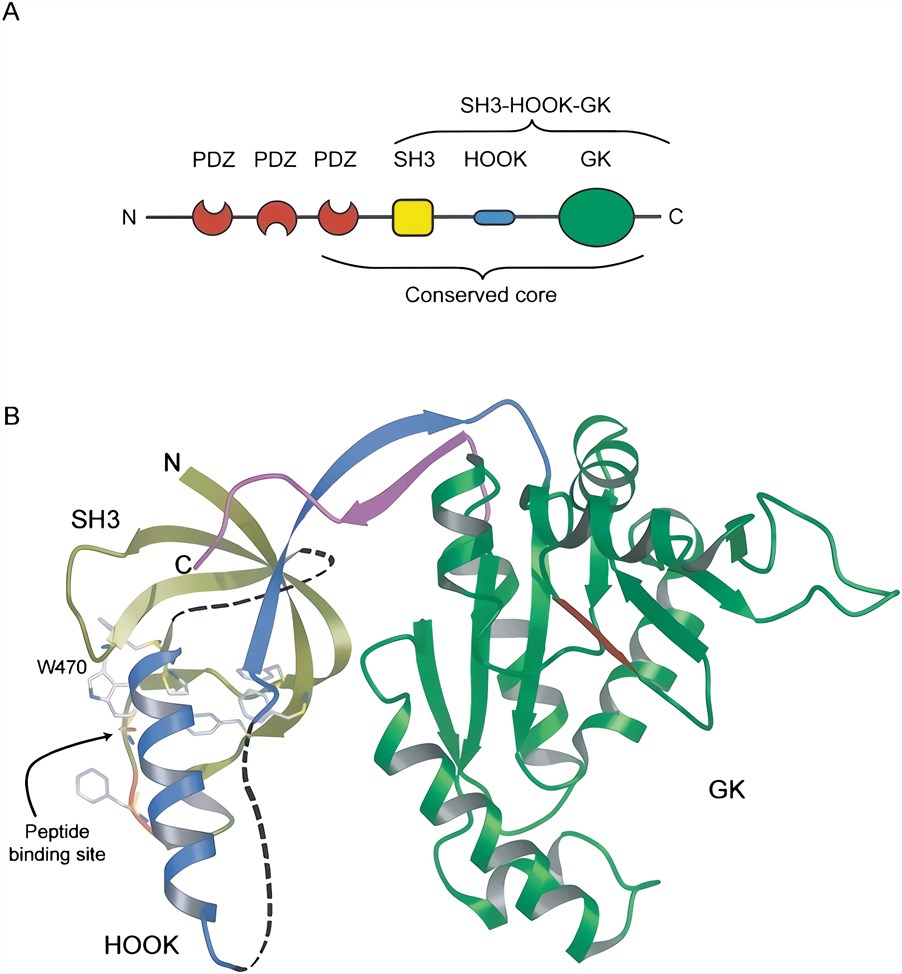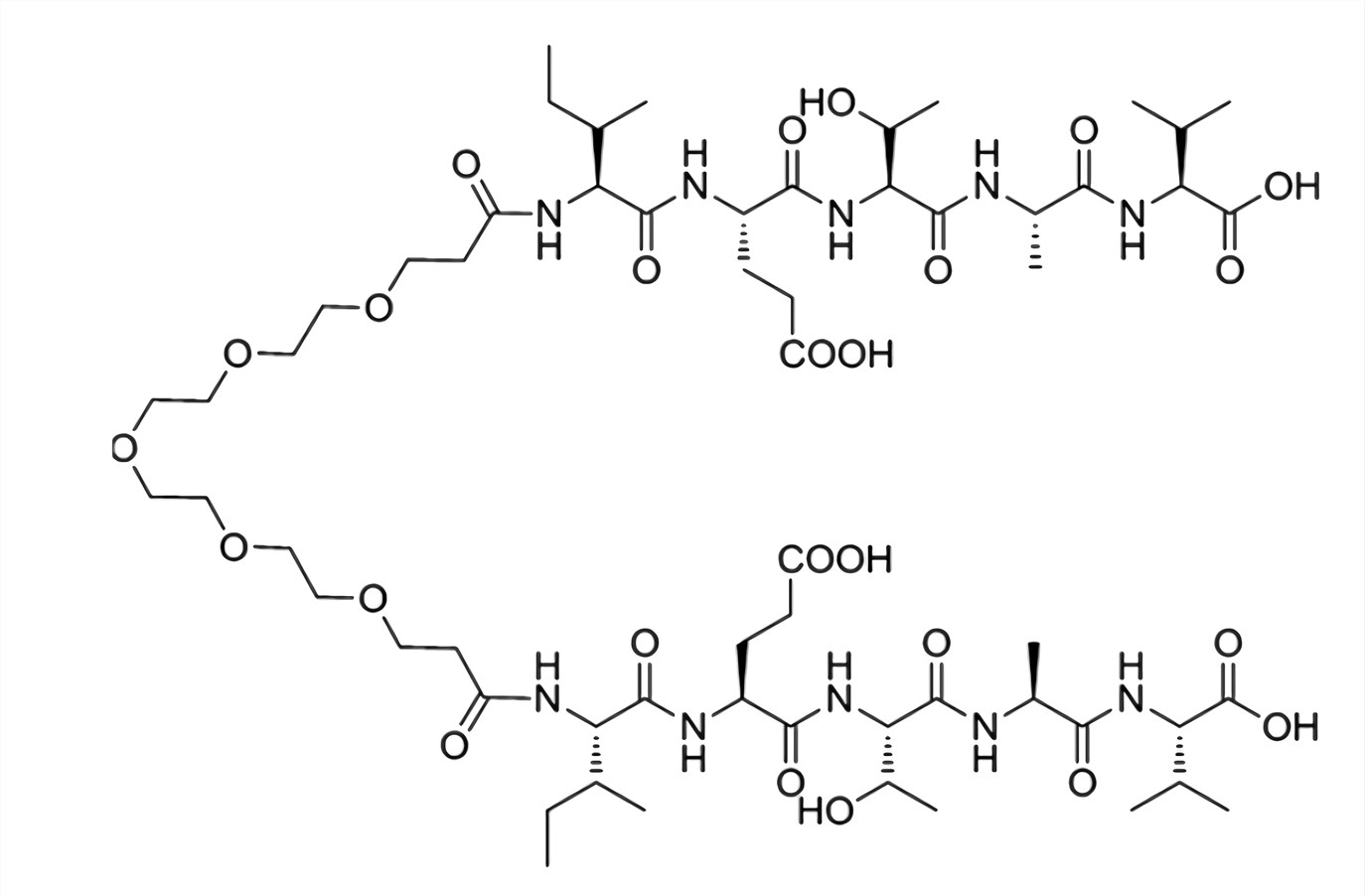To develop an ideal proteolysis targeting chimera (PROTAC®) molecule, the specificity and affinity of the ligand for specific disease-causing protein are very important. At Creative Biolabs, there is a continuous effort to combine computational tools to the chemical and biological space in order to streamline target ligand discovery, design, development, and optimization. Ligand design services for postsynaptic density-95 (PSD-95)-targeting PROTAC® preparation are available for you.
PSD-95 is the best-known member of the membrane-associated guanylate kinase (MAGUK) family. It is a multidomain scaffolding protein that regulates the synaptic localization of many receptors, signaling protein, and channels. PSD-95 consists of three PSD-95/Discs large/ZO-1 (PDZ) domains, an SH3 domain, and a non-catalytic guanylate kinase (GK) domain. The three PDZ domains bind many proteins ranging from adrenergic receptors to neuronal nitric-oxide synthase, synaptic Ras GTPase activating protein, and microtubule assemblies. PSD-95 participates in synapse formation and is a typical example of such a multidomain protein. Structural modeling of the multi-modular organization of PSD-95 has revealed that the protein develops a level of functional regulation through high conformational plasticity that is achieved mainly by the interdomain sequences.
 Fig.1 PSD-95 domain organization. (Tavares, 2001)
Fig.1 PSD-95 domain organization. (Tavares, 2001)
Excessive N-Methyl-d-aspartate receptor (NMDAR)-dependent production of nitric oxide (NO) is mediated by PSD-95. By binding to both the NMDAR and neuronal NO synthase (nNOS), PSD-95 mediates a specific coupling between NMDAR activation and NO production. Therefore, there are two basic strategies to modulate NMDAR-related activity. One is NMDAR antagonism and another alternative approach is to perturb the NMDAR/PSD-95/nNOS complex by targeting PSD-95, thereby decreasing NO production without interfering with the NMDAR ion channel function. Based on this mechanism, many PSD-95 inhibitors have been developed successfully and some of them are currently in clinical and preclinical development for the treatment of stroke.
 Fig.2 Chemical structure of a dimeric ligand. (Andreasen, 2013)
Fig.2 Chemical structure of a dimeric ligand. (Andreasen, 2013)
To bind PDZ2 domains, a series of peptides comprising the nine COOH-terminal residues of NMDAR NR2B subunit (Lys-Leu-Ser-Ser-Ile-Glu-Ser-Asp-Val) were constructed by Creative Biolabs. Peptides containing these nine amino acids have profound effects on signaling pathways downstream of NMDAR activation, in vitro excitotoxicity, and in vivo ischemic brain damage. Besides, the dimeric inhibitor, Tat-NPEG4(IETDV)2 binds the tandem PDZ1-2 domain of PSD-95 with an unprecedented high affinity of 4.6 nM and displays extensive protease-resistance. Encouraged by this novel dimeric inhibitor, Creative Biolabs dimerizes the other two pentapeptides with short polyethylene glycol (PEG) linkers followed by a thorough optimization process. These dimeric ligands displayed unprecedented affinities towards PSD-95.
At Creative Biolabs, protein-protein interactions of PSD-95 are well studied and the following major kinds of protein ligands have been developed. All of these ligands bind to one or more of the three PDZ domains in PSD-95.
Equipped with extensive experience and a solid foundation of professional knowledge, Creative Biolabs provides different peptide ligands design or inhibitor design/modification services for PSD-95. Besides, proteins and antibodies are also available to develop as ligands. Please contact us for more information.
References
Our customer service representatives are available 24 hours a day, from Monday to Sunday. Contact Us
